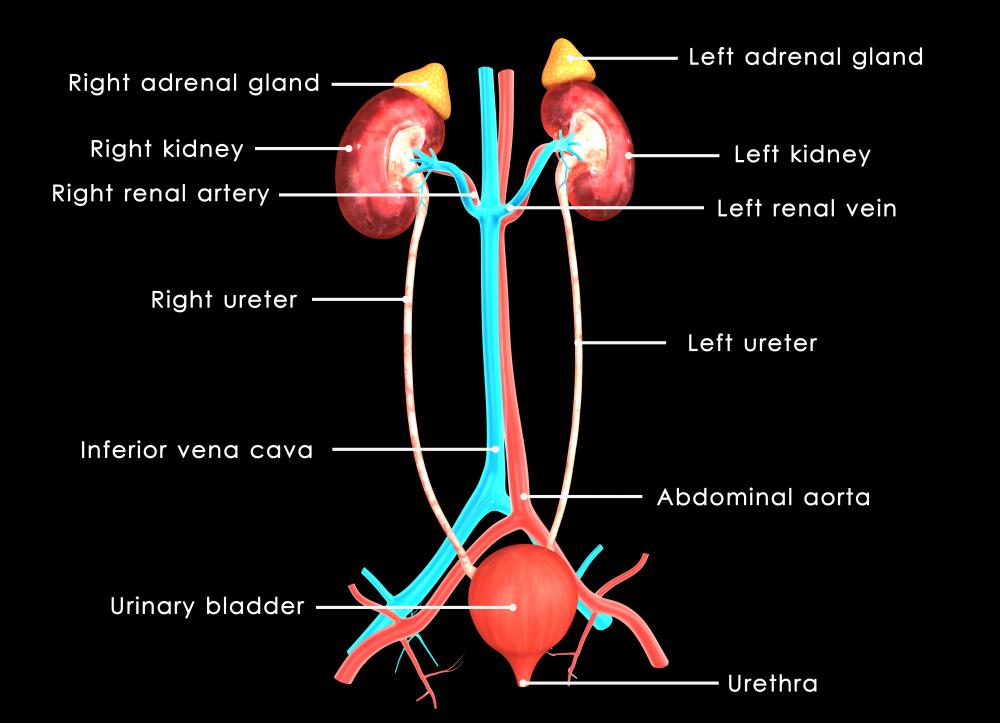At WiseGEEK, we're committed to delivering accurate, trustworthy information. Our expert-authored content is rigorously fact-checked and sourced from credible authorities. Discover how we uphold the highest standards in providing you with reliable knowledge.
What is Micturition?
Micturition, also known as urination and voiding, is a process that allows the body to excrete excess water and get rid of some substances that are potentially harmful to the body. Excess water and other water-soluble substances exit the body in the form of urine. The act is supposedly a voluntary process but for some people, especially the very young and very old as well as those who are suffering from conditions affecting the brain and the spinal cord, it becomes uncontrollable. This is because micturition is under the control of the nervous system, which serves as pathway through which the impulse to urinate travels.
Body organs that are involved in the process are the kidneys, ureter, urinary bladder, and urethra. The kidneys are involved in the production of urine by filtering out excess water waste products. Two thin tube-like structures, called the ureters, connect each kidney to the urinary bladder. Urine that is formed in the kidneys will go down through the ureter into the urinary bladder for storage. Once an individual is ready to urinate, urine will flow out of the body through an opening in the urethra.

The micturition reflex, or the urge to urinate, often involves sending of signals between the urinary bladder, the spinal cord, and the brain. When the walls of the urinary bladder are stretched to their limit due to the presence of urine, nerves located in the bladder walls will send a signal that it is ready to release the accumulated fluid. This signal will travel to the spinal cord, and up to the brain. When the brain receives this signal, it will send down a command for the muscular walls of the bladder to contract and expel the urine out of the body. In circumstances where a person is stuck in traffic, the brain will normally relay a message to the bladder to delay the passing out of urine.

Symptoms of micturition problems include urinary retention, where an individual is unable to empty the bladder completely; urinary incontinence, where he is unable to hold back urination; and urinary frequency, where he experiences the urge for urination more often than normal. Other symptoms are anuria, where there is no urine output at all, and oliguria, where there is very low urine output. These are often due to the presence of underlying medical conditions such as prostate problems, pregnancy, and urinary tract infections. Patients with traumatic spinal cord injury, especially those resulting in the paralysis of muscles from the neck down, also often experience problems in micturition.
AS FEATURED ON:
AS FEATURED ON:















Discussion Comments
@dfoster85 - Oh, that's terrible! I remember how nice it was to be able to take a shower after my c-section. On the other hand, at least when your catheter is in you don't have to get out of bed to use the bathroom!
It's important to drink a lot of water after childbirth, to help your body clear the swelling, whether you have a catheter in or not. It may be counterintuitive, but you're better off if you can keep things moving, keep those kidneys working.
I discovered the hard way that swelling can cause urinary problems after a c-section. They had put in a catheter while I was in labor, because I had an epidural, and they left it in for about twelve hours after my surgery.
But then I still couldn't go! Several hours after they had removed it (I think it was six or so hours later; they waited a specific number), they had to put it back in because I hadn't been able to void. It was so disappointing! Because then I was not able to take a shower, and it was embarrassing when people came to visit me to still be connected to a bag of urine.
They had to leave it in for twenty-four hours -- that was their protocol -- and then they removed it and I was finally able to go.
Post your comments